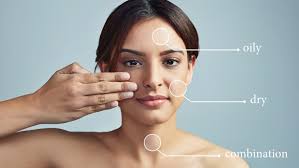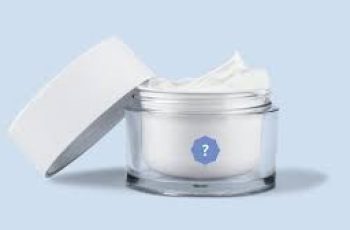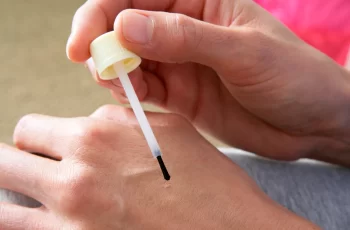
What You Need To Know About Oily Skin
Your skin naturally produces an oil clinically known as “sebum,” which helps preserve moisture. Oily skin occurs due to an overproduction of sebum, which can cause a shiny appearance and enlarged pores.1
Oily skin is very common, especially during adolescence, when it’s a major cause of the development of acne (pimples). Acne is common in about 85% of people ages 15-25.2 Acne and oily skin affect the appearance of your skin and may also affect your self-image.3
Successful approaches to managing oily skin focus on restoring the proper level of sebum.
Traits
Oily skin mainly affects the face, scalp, and upper torso. It’s often centered on the “T-zone,” which is the forehead, eyebrows, nose, and chin. Common signs of oily skin include:3
Waxy or shiny skin with a “greasy” appearance
Enlarged pores, which are the tiny holes in the skin that release oil and sweat
Acne, including red bumps (papules), white or yellow bumps (pustules), nodules (bumps beneath the skin), and cysts (pimples)
Closed comedones, or whiteheads
Open comedones, or blackheads
Seborrheic dermatitis (dandruff); itchy skin with white or yellow scales (may appear lighter or darker on brown or black skin)
Some people have “combination” skin, where parts of the skin are oily, while others are dry.4 The T-zone often remains oily in people with combination skin, with the cheeks or other parts of the face flaky and dry.
Causes of Oily Skin
In a process called holocrine secretion, the sebaceous glands (located at the roots of hair follicles) produce sebum from material from dead, used skin cells. They secrete this oil into the lipid layer outside the skin (stratum corneum).5 Oily skin happens when too much sebum is produced and disrupts the layer.
A wide range of factors can cause or worsen oily skin, like climate, hormonal shifts, genetics, and certain hygienic practices. Cases can occur due to a combination of these factors.
Genetics
There’s significant evidence that your genes play a role in oily skin and acne. In one wide-ranging study of identical and fraternal twins, researchers found that genes determined nearly half the variability in sebum production.6
Genetics may not be the only factor, but it clearly plays a big part.
Androgens
High levels of androgens—the class of sex hormones that includes testosterone—stimulate sebaceous gland overproduction in both females and males.7 Not only does this lead to oily skin, but it also spurs acne in adolescents or males using testosterone replacement therapy.8
Since estrogen—the hormone that regulates the female reproductive system—reduces sebum production, oily skin is more common in people assigned male at birth than in people assigned female at birth.9
Growth Hormones
Growth hormones like insulin and insulin-like growth factor-1 (IGF-1) are produced in the pituitary gland, which is a part of your endocrine system. They regulate your height, bone length, and muscle development. High levels of these hormones stimulate your sebaceous glands to release more sebum.10
Because they’re more active during puberty, adolescents are more likely to have oily skin and acne.
High Glycemic Diet
Studies have linked high-glycemic diets, which are rich in carbohydrates and simple sugars, with sebum production. This may be due to effects on hormone activity, including spikes in insulin and IGF-1. High-glycemic foods include white or whole-wheat bread, white rice, many snack foods, potatoes, and sugar.11
Lack of Sleep
There’s a reason they call it beauty sleep. Not getting enough sleep doesn’t only leave bags under your eyes; it can also spur oil production. In one study of adults in South Korea with oily and non-oily skin, sebum levels were consistently lower after four hours of sleep.1
Skincare Practices
Certain hygiene practices and habits can worsen oily skin. Soaps, lotions, and other products made with alcohol or oil irritate the skin and break down the stratum corneum.12 Even though they may temporarily remove oil, this can trigger increased production.
Humidity
Your pores secrete sweat when exposed to hot or humid air, stimulating sebum production. Research has found that humid air can trigger acne and oily skin, especially when it’s hot. Humidity has also been linked to eczema flare-ups, which cause dry, flaky, and itchy skin.13
Effects and Complications
Oily skin can cause more frequent acne breakouts because excess oil can attract dirt and bacteria, which may infect pores and cause acne.3 It can also cause makeup to be patchy or tougher to apply and not last as long after application.
Having oily skin may affect self-esteem and lead to loneliness and social isolation. Across numerous studies, those with oily skin and acne had higher rates of anxiety and depression and were more likely to feel stress.14
How to Care for Oily Skin
Establishing a skincare routine can go a long way in managing oily skin, removing excess oils, and preventing acne. Several steps that may help include:144
Regular face washing: Wash your face twice a day—in the morning and before bed—and after exercise or physical activity. Be gentle.
Mild soaps: Don’t use alcohol or oil-based soaps, which can irritate skin and boost sebum levels. Foamy, gentle facewashes are best.
Moisturize: When skin gets too dry, the sebaceous glands become more active, producing more oil. Use an oil-free, gentle moisturizer.
Exfoliate: For oily skin, deep-cleaning exfoliants, such as glycolic acid, remove dead skin cells and prevent clogged pores. Exfoliate once or twice a week.
Facial toner: Use facial toners to moisturize skin and tighten pores.
Makeup removal: Remove any makeup before going to bed.
Do’s and Don’ts
When it comes to living with and managing oily skin, it’s important to develop good habits. The overall goal is skin that’s neither too oily nor too dry.
Oily Skin Do’s
Here’s what to do to care for oily skin:14
Check the ingredients: Make sure soaps, lotions, or other products are labeled “oil-free,” “noncomedogenic,” and “alcohol-free.”
Use blotting papers: Dab with blotting papers to remove excess oil, being careful not to irritate skin.
Block out UV rays: Protect your skin from the sun; use sunscreen or wear a hat to limit exposure.
Use safe makeup: If you wear makeup, use oil-free or water-based products and choose powders, concealers, and foundations that are “shine-free” or “mattifying.”
Change your brushes: Use brushes or pads rather than fingers to apply makeup and change these out regularly to prevent bacterial buildup.
Get help: If you’re having trouble managing oily skin on your own, talk to your provider or seek care from a dermatologist.
Oily Skin Don’ts
Mistakes people make when caring for oily skin often involve irritating or drying out the skin, disrupting the skin barrier, and boosting sebum production. Here’s what you shouldn’t do:14
Don’t use harsh soaps: Never use oil or alcohol-based soaps or lotions, and be gentle as you wash your face.
Don’t go to bed wearing makeup: Wearing makeup overnight can disrupt the skin barrier and trigger oiliness or other skin symptoms.
Don’t touch your face: Dirt and bacteria from the fingers on the face can reach the pores, causing acne. Limit how much you touch your face and avoid picking or popping pimples.
Don’t overdo it: Stick to a facial cleansing routine, but remember that cleaning too often can disrupt the stratum corneum, causing more sebum production.
Other Treatment Options
Beyond a skincare routine and good practices, there are a range of additional ways to manage and treat oily skin. These span from medications to lifestyle changes and other treatments.
Medications
In difficult-to-manage cases of oily skin, a dermatologist (skin specialist) may prescribe:9
Topical retinoids, a form of vitamin A applied to the skin
Hormonal birth control, which boosts estrogen levels to take on oil
Topical niacinamide, a form of vitamin B3 that promotes the skin barrier
Isotretinoin, an oral retinoid
Spironolactone, a diuretic (water pill) used for high blood pressure
Botulinum toxin A (Botox) injection
Dietary Changes
Since high-glycemic foods can cause oily skin and acne, modifying your diet to avoid them can be an additional means of management. Avoid sugars and carbohydrates while focusing on healthy, lean protein and fresh vegetable sources.
Natural Remedies
Many products are marketed to treat oily skin, but not all are effective.
There’s evidence that green tea may help, with eight weeks of regular application lowering measures of sebum in one study.9
Clay masking, wearing a mask made of clay to clean the skin, can effectively remove oil from the pores. In one study, clay masking twice weekly over four weeks reduced oiliness and acne.15
A Quick Review
Oily skin looks shiny or greasy. It occurs when glands in the skin produce too much sebum, secreting it from pores. A combination of genetic and environmental factors causes this condition, which can lead to frequent acne and affect quality of life.
Moisturizing and regularly cleaning the skin with gentle products are among the methods to manage oily skin. Dermatologists (skin specialists) can prescribe medications in severe or difficult-to-manage cases.


